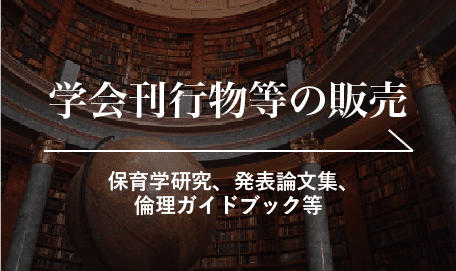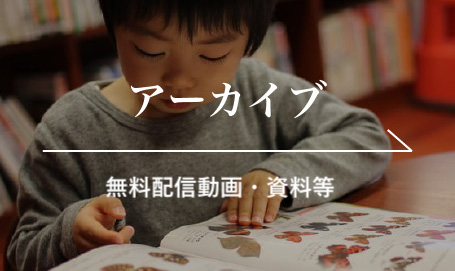< VOLUME 43, No.1 >
Tsumori Makoto. The Developmental Task Viewed from Early Childhood Care and Education.
Research on Early Childhood Care and Education in Japan, 2005, 43(1), 12-18.
The late Dr. Masako Shoji, former President of the Japan Society of Research on Early Childhood Care and Education, translated Havighurst’s theory of “developmental task” into Japanese in 1958; it was reprinted in 1995. In the preface of the first edition, a famous pedagogue, Arata Osada pointed out that Havighurst’s theory of developmental tasks included a biological, psychological, and ethical focus as well as other views. He predicted that it would form an important educational cosmos in the future. I discussed Erikson’s epigenesis, as compared to Havighurst’s theory. I referred to my study on developmental diagnosis, which was published in 1961 and recently reexamined. A child’s inner intention can show his/her developmental task appropriately. For instance, a child’s effort to stand up would indicate his/her developmental task better than a detailed list of motor development for walking. In this regard, I also noted that there is no global standard across cultures.
Keywords: developmental tasks, Havighurst, Erikson, developmental diagnosis, care and education
—————–
Honda Masuko. Developmental Tasks and Educational Tasks in Early Childhood.
Research on Early Childhood Care and Education in Japan, 2005, 43(1), 19-26.
The purpose of this study is to examine developmental tasks in early childhood and suitable care and education to achieve them. The author considered this issue from the following three perspectives: (1) the historical process of forming a concept of life stages and developmental tasks, (2) the significance of early childhood, and (3) the difference between developmental tasks and the actual problems of child care and education. The results revealed that developmental tasks and their problems have not changed since the Middle Ages in terms of life stages. Although this suggests that developmental tasks for children are generally universal and remain constant throughout history, today it is necessary to have flexibility in dealing with educational tasks in order to adapt to current social demands.
Keywords: developmental tasks, historical process, life stages
—————–
Udagawa Kumiko. Expanding the Communicative World of a Child with Autistic Tendencies : The Role of ‘Imitation’ and Its Implications.
Research on Early Childhood Care and Education in Japan, 2005, 43(1), 27-38.
The purpose of this study was to analyze how the communicative world of a child with autistic tendencies and the author was expanded. Processes of practice with a boy with autistic tendencies, from the age of four through five, were analyzed. My spontaneous imitation of his behavior initiated his imitation of my behavior; the mutual imitation gradually expanded. We established a commonality in our communicative world based on mutual trust. I looked as he looked; I felt as he felt in order to try to understand him. Consequently I imitated him, and in doing so, implied that I was on an equal basis with him as a counterpart who reacted. The result suggests the significance of imitating the behavior of a child with autistic tendencies to expand the child’s communicative world.
Keywords: communicative, a child with autistic tendencies, mutual imitation
—————–
Sunaga Miki. On the Possibility of Phased Steps as Part of Constructing Relationships with Others : The Meaning of “Relationships” for Children.
Research on Early Childhood Care and Education in Japan, 2005, 43(1), 39-50.
The purpose of this study is to analyze a child’s processes of constructing relationships with others in her play in a kindergarten. A 4-year-old girl who had some difficulty in building relationships with her peers was observed. There appear to be three phases by which children build relationships with others. The first observed was a play-oriented interaction phase in which the child proposed a play so that the play itself calls attention to anybody who might play with her. The second phase was a tool-mediated interaction phase in which a particular artifact (tool, toy, etc.) was introduced to attract other children to play with her. The third was an “other”-oriented interaction phase, in which the child’s intention to play was clearly specific as ‘play with A’ (a particular child).
Keywords: relationship, orientation, play, artifact, peer
—————–
Kondo Mikio. A Study on “Investigation Report of the Educational Systems (1902)” by Michiyoshi Mishima : On Children’s Age and School Readiness.
Research on Early Childhood Care and Education in Japan, 2005, 43(1), 51-58.
The age at which children begin school is six years in Japan. It is a part of the Japanese educational system which has 130 year history since the proclamation of the “School System” in 1872. There has been very little historical research on the controversy of those times regarding school age. The author took notice of Michiyoshi Mishima’s article: “Investigation Report of the Educational Systems: The Issue of School Age (1902)”, which had not been researched in earlier literature. Mishima settled the argument of children’s age and school readiness in his article. He maintained that six years was the standard age for beginning school in those days and proposed his concrete idea of educational contents and methodology for the first grade. This argument in the middle of Meiji period suggests a viewpoint toward educational reform today.
Keywords: school system, school age, school readiness
—————–









